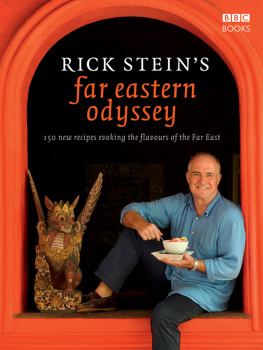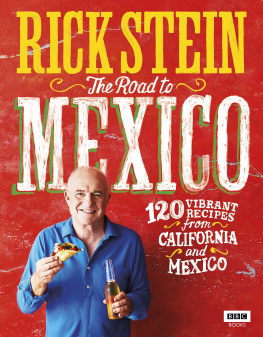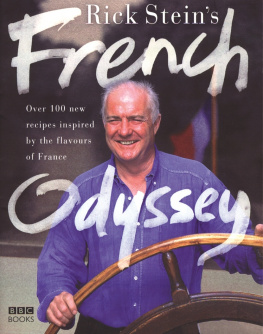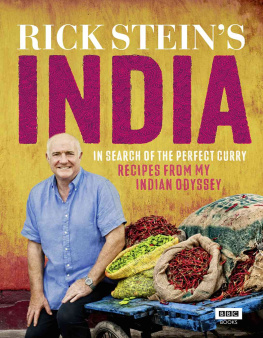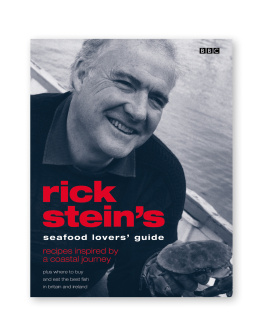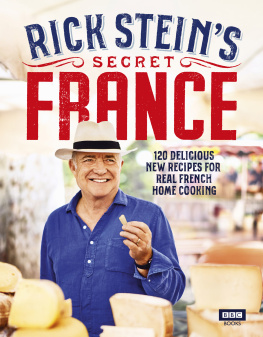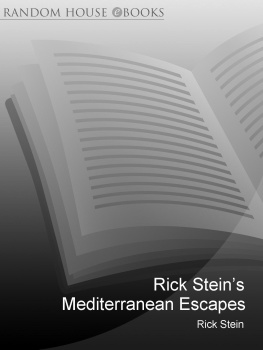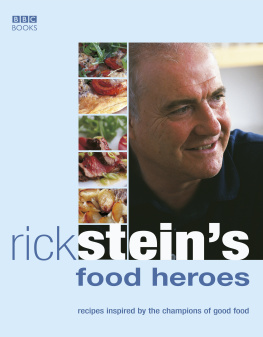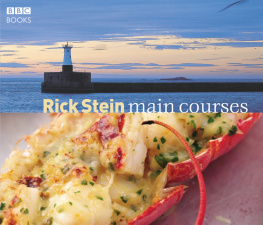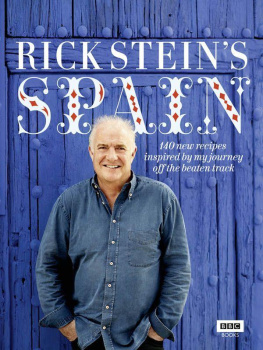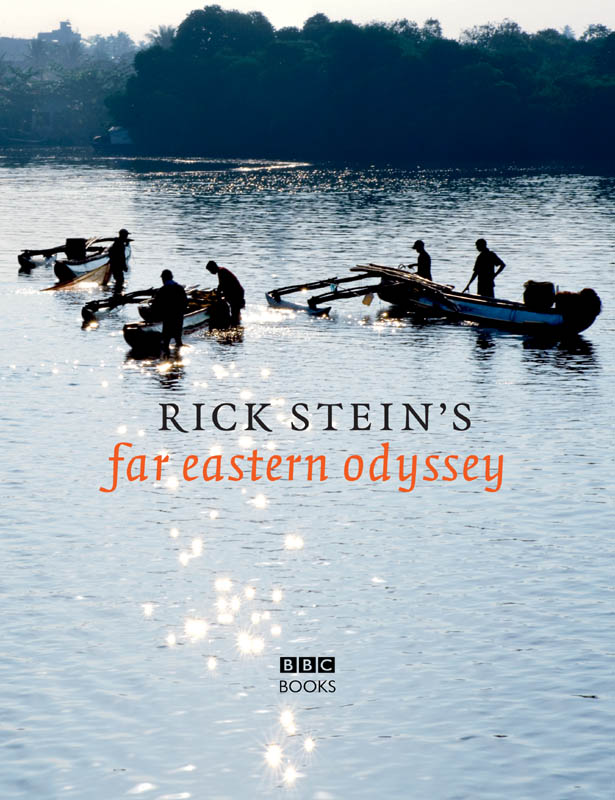This book is dedicated to Edward, Jack and Charles and Sarah, Zach and Olivia
This ebook is copyright material and must not be copied, reproduced, transferred, distributed, leased, licensed or publicly performed or used in any way except as specifically permitted in writing by the publishers, as allowed under the terms and conditions under which it was purchased or as strictly permitted by applicable copyright law. Any unauthorised distribution or use of this text may be a direct infringement of the authors and publishers rights and those responsible may be liable in law accordingly.
Version 1.0 Epub ISBN 9781448140220
10 9 8 7 6 5 4 3 2 1
This book is published to accompany the television series entitled Rick Steins Far Eastern Odyssey, first broadcast on BBC2 in 2009
The series was produced for BBC Television by Denham Productions
Producer and director: David Pritchard
Assistant producer: Arezoo Farahzad
Executive producers for the BBC: Tom Archer and Jo Ball
Copyright Rick Stein 2009
Rick Stein has asserted his right to be identified as the author of this Work in accordance with the Copyright, Designs and Patents Act 1988
Photography copyright James Murphy
All rights reserved. No part of this publication may be reproduced, stored in a retrieval system, or transmitted in any form or by any means, electronic, mechanical, photocopying, recording or otherwise, without the prior permission of the copyright owner
The Random House Group Limited Reg. No. 954009
Addresses for companies within the Random House Group can be found at www.randomhouse.co.uk
A CIP catalogue record for this book is available from the British Library
ISBN 978 1 846 07716 6
Commissioning editor: Shirley Patton
Project editor: Mari Roberts
Assistant editor: Laura Higginson
Home economist: Debbie Major
Design and art direction: Smith & Gilmour
Prop stylist: Penny Markham
Map illustration: David Dean
Calligraphy: Peter Horridge
Production: Bridget Fish
Colour origination by Altaimage, London
CONTENTS
About the Book
Rick Steins Far Eastern Odyssey is an ambitious journey in search of the authentic food of the East, avoiding the beaten track and typical tourist hot-spots. In this accompanying book to the major BBC series, Rick shares his favourite recipes and some well-known classic dishes inspired by the fragrant ingredients and recipes he samples from local chefs, family-run restaurants, street vendors and market stalls.
In Cambodia, Rick learns how to make a national dish Samlor kako, a stir-fried pork and vegetable soup flavoured with an array of spices; in Vietnam he is shown the best recipe for Pho Bo, the famous beef noodle soup; and in Thailand, Rick tries Geng Leuong Sai Gung Lai Sai Bua, a yellow curry made with prawns and lotus shoots that has never been tasted outside the country until now.
Rick Steins Far Eastern Odyssey includes over 150 new recipes from Cambodia, Vietnam, Thailand, Malaysia, Bali, Sri Lanka and Bangladesh, each complemented by Ricks colourful anecdotes from the trip and stunning location photography. This is a culinary tribute that evokes the magic of bustling markets, the sizzling oil and the aromatic steam of a Far Eastern kitchen.
About the Author
Rick Stein is a well-loved and respected chef, TV presenter and author who has produced an array of award-winning books and television series, including Rick Steins Seafood, French Odyssey, Mediterranean Escapes, Coast to Coast and Spain. All of his books and programmes show a commitment to good-quality produce, sustainable fishing and good husbandry.
Rick is a firm supporter of sustainable farming and fishing techniques, which he strives to maintain in Padstow, Cornwall, where he runs four acclaimed restaurants and a seafood cookery school, as well as a delicatessen and patisserie. In 2003, Rick was awarded an OBE for services to West Country tourism. He divides his time between Padstow and Australia, where he opened a restaurant, Rick Stein at Bannisters, in 2009.
INTRODUCTION
Do you know those cheap plastic chairs in Southeast Asia whose legs are apt to collapse under a Westerners weight? They come in pastel shades of pale green and blue, or faded red and scruffy white. I particularly remember them at the Ta Ouv restaurant in Kampot, Cambodia, because in addition to the worry about the legs giving way, there were also the gaps between the wooden planks, under which flowed the Kampot river. The planks were spaced just wide enough apart to fit the spindly legs and pitch you over anyway. Our table had been painted pale green but was now more wood than paint. We ordered Angkor beer while we waited for our food, loc lac and stir-fried chilli crab with green peppercorns.
We had just been filming in the kitchen where I had noticed, with some amusement, the number of dogs wandering through. It had been very busy in there. By one set of windows were three giant terracotta pots on wood burners, one containing stock for the soups the Cambodians adore, the others rice. In the centre were two large tables, on one of which was a considerable number of ingredients: a bottle of fish sauce, a bunch of long lemongrass stalks, sliced shallots and garlic, a pile of snake beans, various battered aluminium bowls containing chillies, chopped peanuts, prahoc the pungent fermented fish paste from the Tonle Sap lake in the centre of the country near Siem Reap various saucers of what looked like salt and sugar, and others the chefs described as seasoning and soup powder: MSG, in other words. At the other table a couple of chefs were chopping up a pile of rather sinewy-looking beef, presumably for making the loc lac, about which I had heard so much. In one corner opposite the pots some ladies were doing the washing up, squatting on the floor using two big bowls. The dogs were mostly around them so presumably they were pets.
We had asked one of the chefs to allow us to film the making of loc lac and he let us know that now was the time, in between cooking dishes for the busy restaurant. He turned a massive gas burner up to full, planted a large black wok on it and threw in a ladleful of oil followed by a scoop of garlic and ginger. Straight in went the beef, followed by chilli paste, fish sauce, prahoc and, amazingly, a dollop of tomato ketchup. He stirred it, added a spoonful of salt, a big pinch of MSG and turned it out onto a pale blue melamine plate, on which were sliced tomato, onions and lettuce. It was done. He went straight on to cooking the crabs. These had already been chopped into four or five pieces each, claws and legs still moving. Taking the same wok he poured in more oil, added the crabs and stir-fried them over a high heat for no more than two minutes. Then he threw in sliced garlic, a couple of sprigs of green peppercorns, a generous slurp of soy sauce, a similar amount of fish sauce, some sugar, a pinch of MSG and a little water, put on a lid and left the crabs to cook for a couple of minutes, then they were done too. While we were filming, a girl had made a salad of translucent rice noodles with pink shallots, cooked prawns, pork and squid, chopped red birds eye chillies, roasted peanuts, lime juice, fish sauce, mint, coriander and palm sugar. I spoke rather enthusiastically to the camera about the swagger of these young gun chefs, the speed but also the economy of effort, the heat, the aromas of lemongrass and lime, pungent fish sauce and fish paste, then we all sat down for one of those never-to-be-forgotten lunches. I remember saying that in future all cookery filming was to be like this. We turn up at a fabulously atmospheric kitchen complete with wandering dogs, spend only half an hour filming the chefs because everything is so quick, then sit down to a lovely lunch. I talk about the joy of alfresco eating on a pier out in the Kampot river, then we stop filming and have a few beers. Return to the art deco hotel in Kep for a siesta, then maybe catch the sun setting over the Gulf of Thailand. Yes indeed, filming would always be like that.

